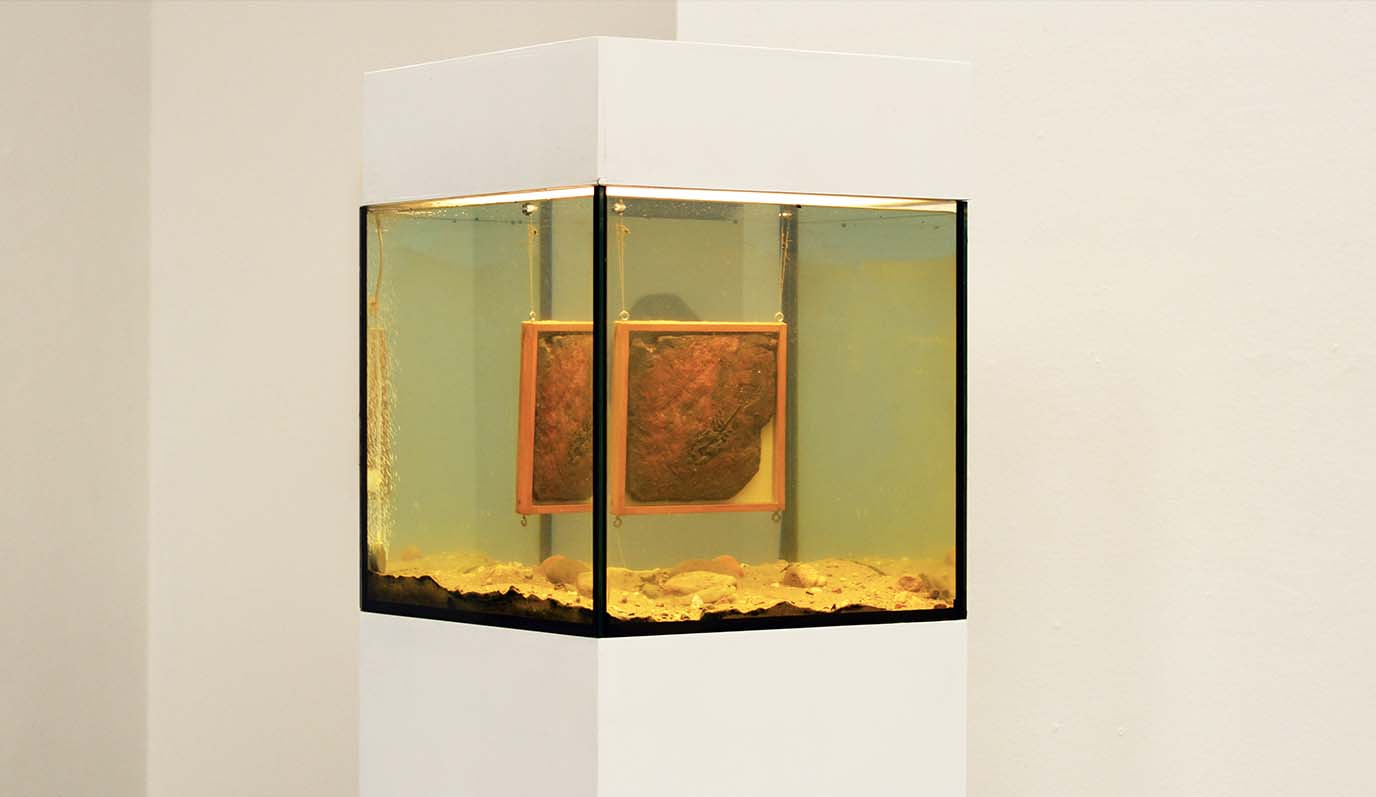
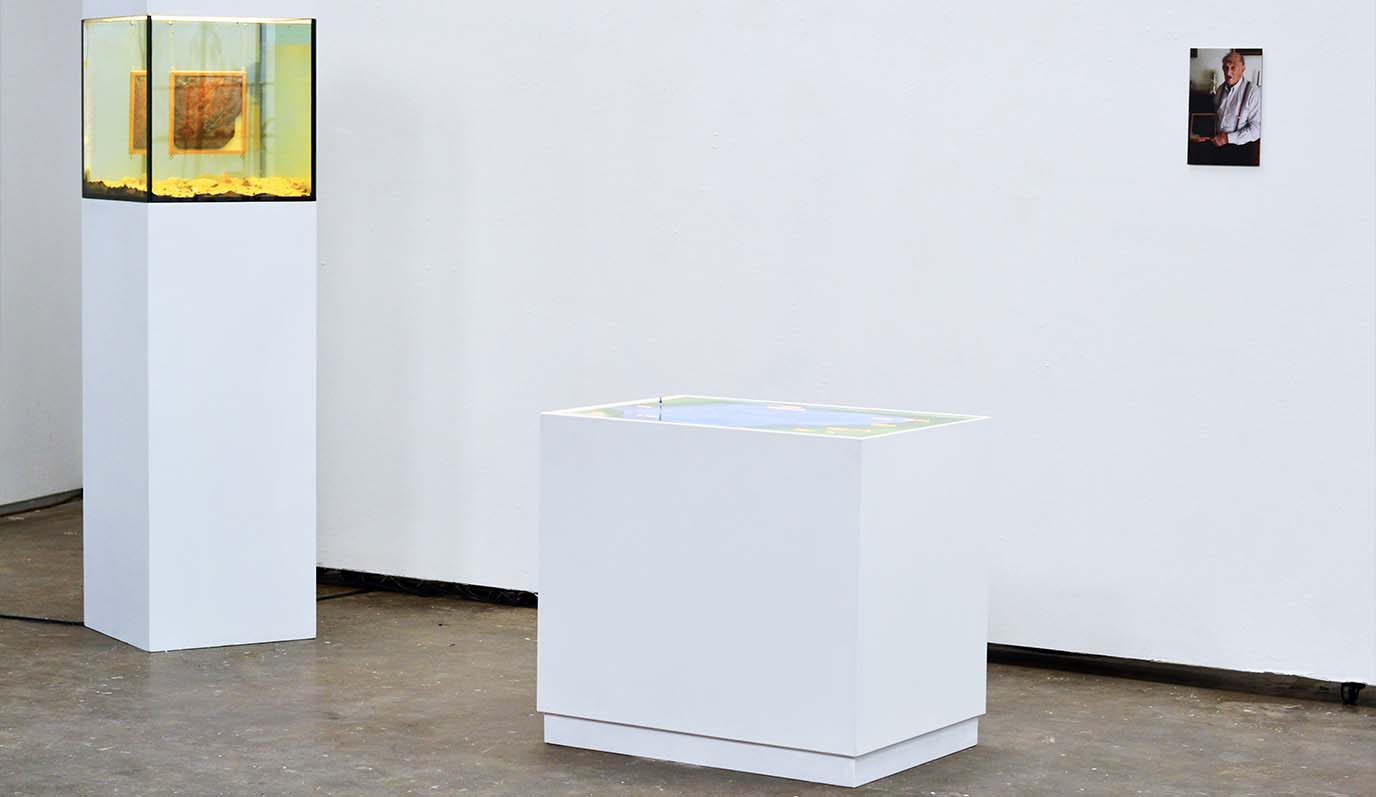
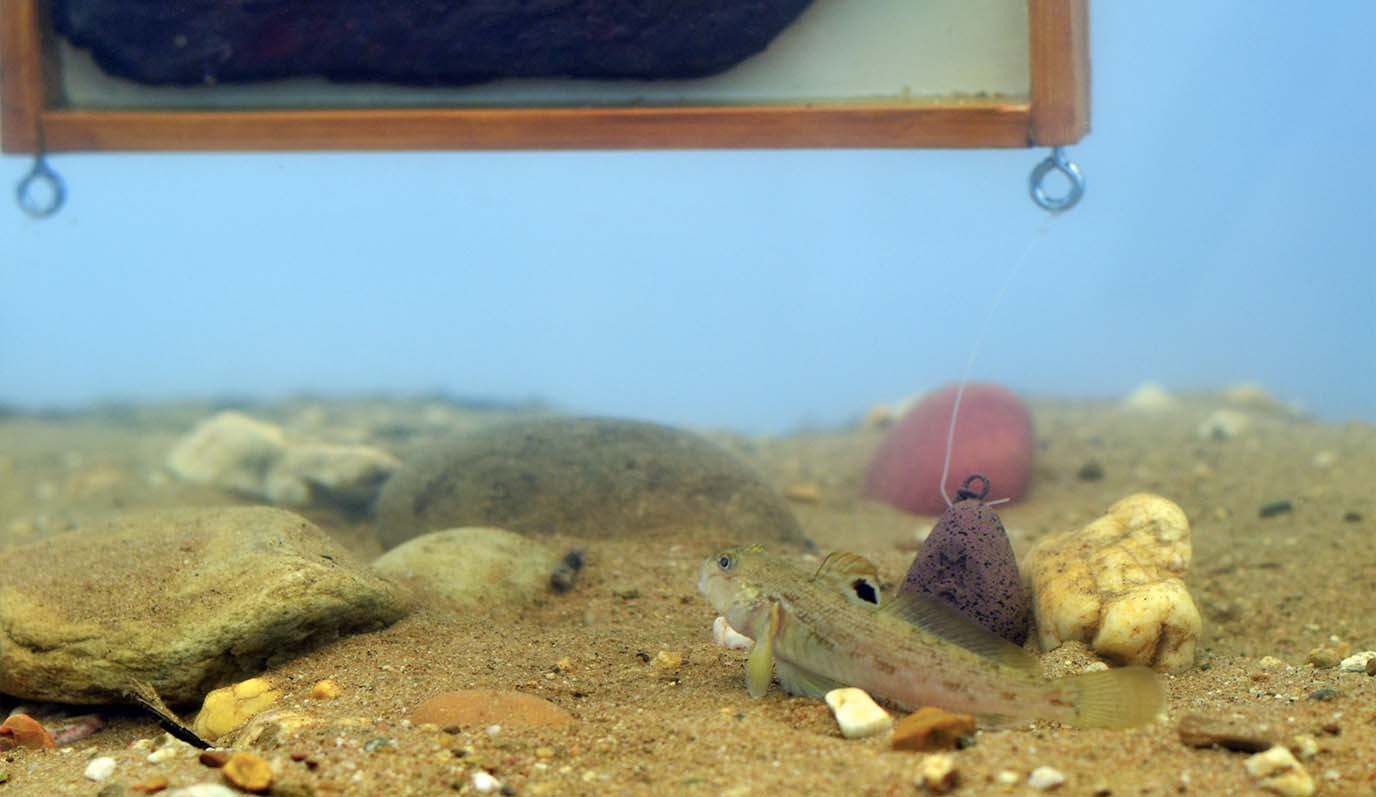

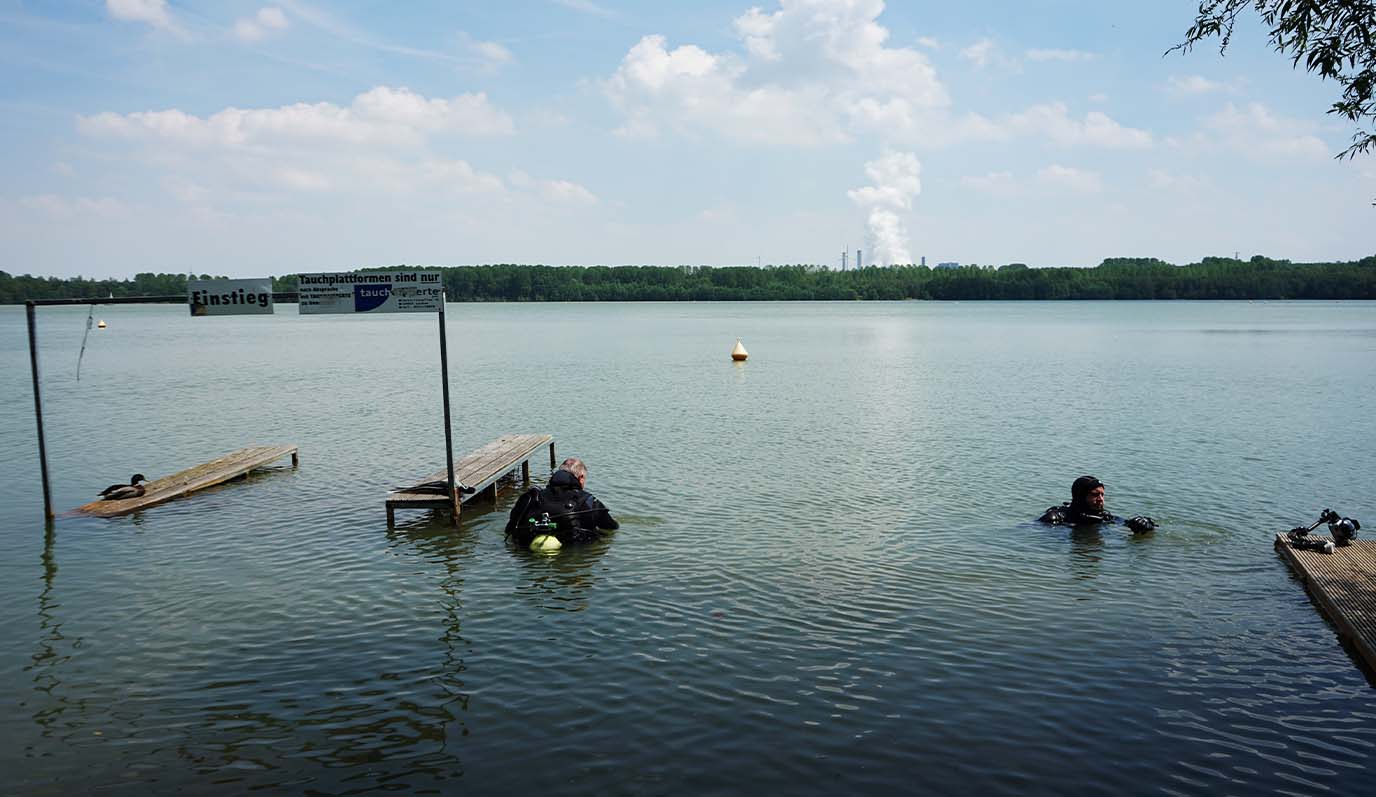
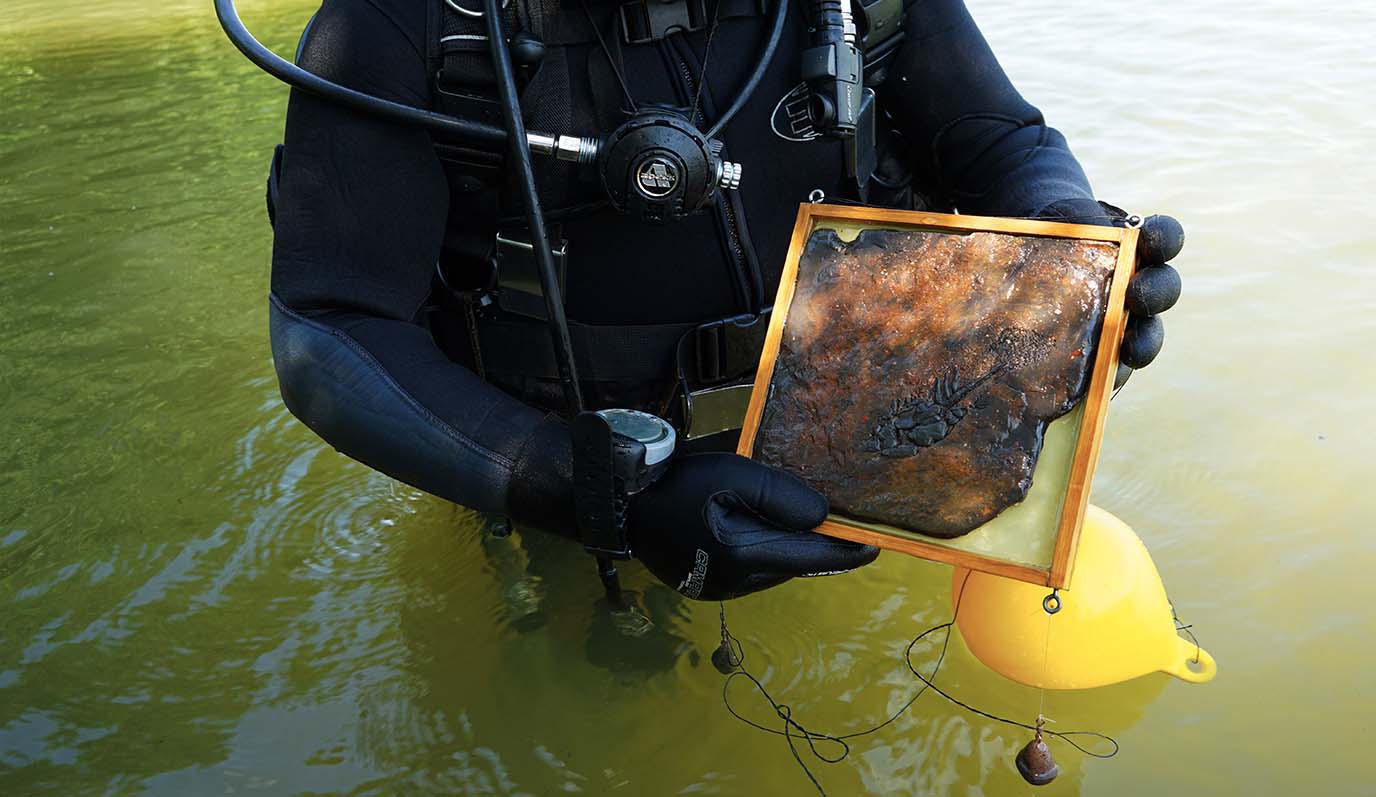
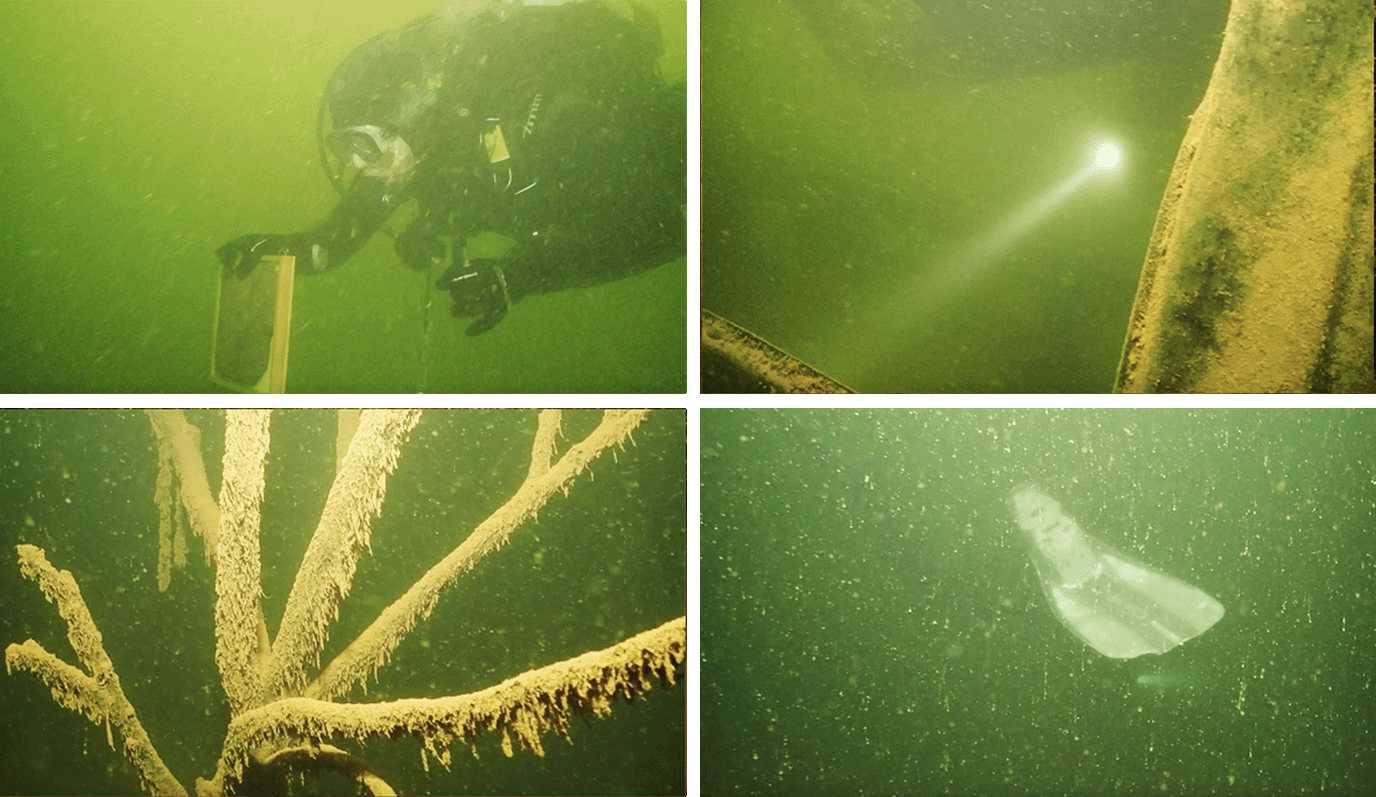
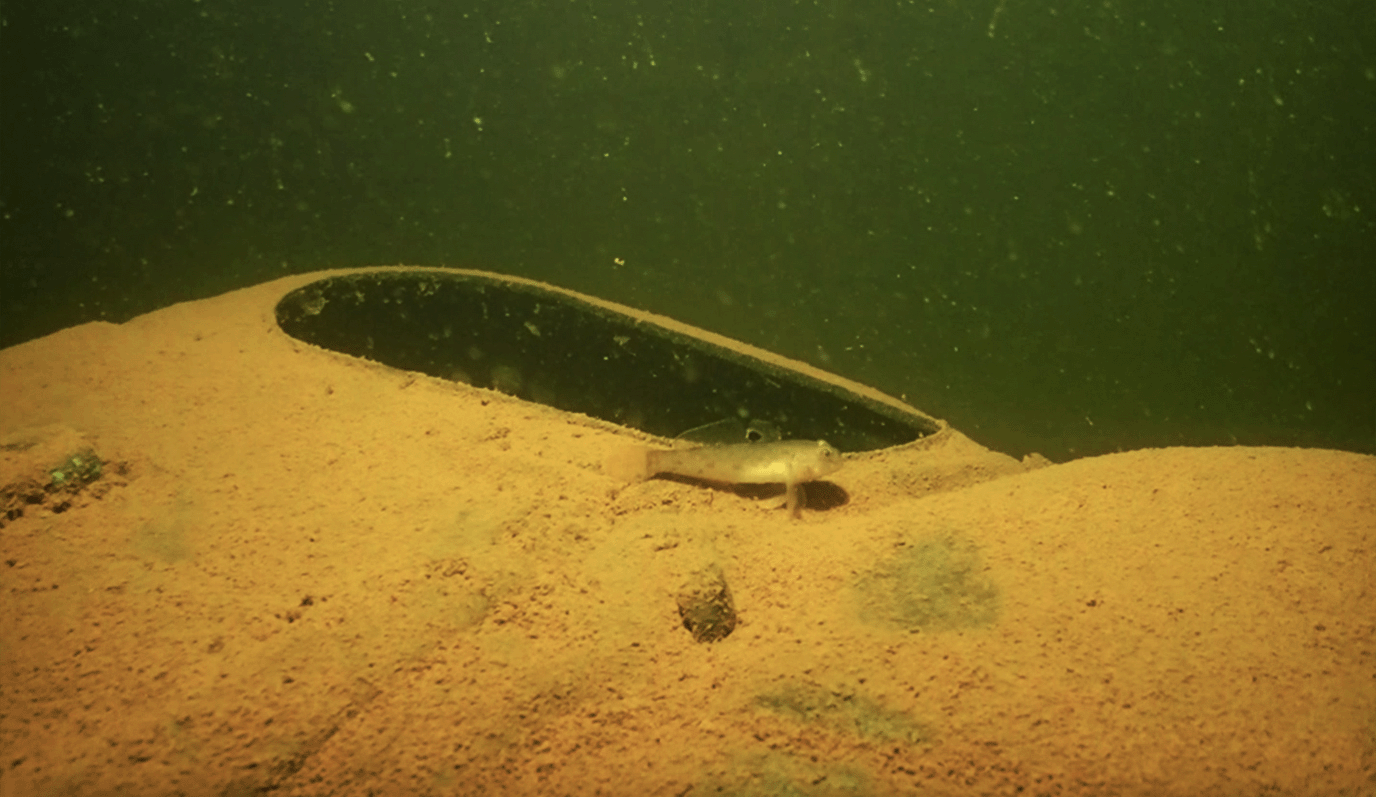
01. Descent into the Future (2020-2021)
Location: Blausteinsee, North-Rhine Westphalia, Germany
Installation (fishtank, maps, picture) 185x50x50 cm (fishtank), 60x80x75 cm (map), 20x30 cm (print), video (18m30s, HD)
Thanks to Uli Lieven, Elena Khurtova, Montei Di Matteo, Miriam van Rijsingen, Mona Steinhauesser, Albath Goldschmiede Aachen, family Draaisma, Syver Petersen, Sadie Hale
Team: Erik Linden (camera & diver) & Wiely Goorden (diver)
In North-Rhine Westphalia, a border region in the west of Germany, large landscapes are being excavated for lignite, a brown coal used to produce electricity. The practice leads to the largest excavation site in the world, unearthing many archaeological objects which are being archived in national musea. A popular method of dealing with the industrial excavation pits left in the landscape is to simply fill them with water, creating a tabula rasa within this landscape. Due to the fact that there is no local museum for the excavated land and villages, the landscape looses its natural and cultural characteristics, causing a sense of groundlessness amongst the local inhabitants. This feeling was witnessed in my own family history, manifesting in the quote: ’I was born inside a lake’.
The installation focuses on the discovery of a unique fossil from the "Zukunft-West" (Future-West) lignite quarry in North Rhine-Westphalia, Germany. During excavations in this quarry a 12 million years old fish fossil from the Miocene era was found. The discovery represents the only fossil of a fish found in the wider area, and symbolizes the sacrifice of living ecosystems for fossil fuel, a natural product created through the dying of ancient ecosystems. In the Anthropogenic era in which it surfaces, the fossil gives a unique insight into a non-human time period when this landscape was still covered with a prehistoric sea; and thus closes a cycle, since the quarry was again filled with water after the excavations, turning it into the ‘Blausteinsee’.
Location: Blausteinsee, North-Rhine Westphalia, Germany
Installation (fishtank, maps, picture) 185x50x50 cm (fishtank), 60x80x75 cm (map), 20x30 cm (print), video (18m30s, HD)
Thanks to Uli Lieven, Elena Khurtova, Montei Di Matteo, Miriam van Rijsingen, Mona Steinhauesser, Albath Goldschmiede Aachen, family Draaisma, Syver Petersen, Sadie Hale
Team: Erik Linden (camera & diver) & Wiely Goorden (diver)
In North-Rhine Westphalia, a border region in the west of Germany, large landscapes are being excavated for lignite, a brown coal used to produce electricity. The practice leads to the largest excavation site in the world, unearthing many archaeological objects which are being archived in national musea. A popular method of dealing with the industrial excavation pits left in the landscape is to simply fill them with water, creating a tabula rasa within this landscape. Due to the fact that there is no local museum for the excavated land and villages, the landscape looses its natural and cultural characteristics, causing a sense of groundlessness amongst the local inhabitants. This feeling was witnessed in my own family history, manifesting in the quote: ’I was born inside a lake’.
The installation focuses on the discovery of a unique fossil from the "Zukunft-West" (Future-West) lignite quarry in North Rhine-Westphalia, Germany. During excavations in this quarry a 12 million years old fish fossil from the Miocene era was found. The discovery represents the only fossil of a fish found in the wider area, and symbolizes the sacrifice of living ecosystems for fossil fuel, a natural product created through the dying of ancient ecosystems. In the Anthropogenic era in which it surfaces, the fossil gives a unique insight into a non-human time period when this landscape was still covered with a prehistoric sea; and thus closes a cycle, since the quarry was again filled with water after the excavations, turning it into the ‘Blausteinsee’.
The installation Descent into the Future I (2020) shows a set-up for a temporary underwater museum for divers, from whereon a diving expedition into the lake could develop. For this installation, the finding place of the fossil was retraced on old maps of the quarry, and the original fish fossil was replicated using 3D-scan technology and clay, making it again fit for life underwater. In order to acquire a sense of place, the contemporary geographical and diver map of the Blausteinsee were merged with historical maps of the ‘old’ landscape, creating an historical overlap wherein the fish-fossil location was shown using a pin. The map and water tanks are enlightened, hinting to the electricity which is produced by the lignite industry. In the installation, the fish fossil is united with the Round Goby, the fish which ascended from the fossil, and the water of the Blausteinsee. By bringing the fish together with the current chemical composition of the water from the lake (a chemistry which is influenced by industrial remnants within the water) an exchange between the past and the present of the landscape is being established, visible to the visitors of the exhibition.
Exactly one year after the fish-fossil was replicated, it was replaced on its original finding spot within the Blausteinsee. The journey was filmed, resulting in a video. By doing so, we performed a ritual which closed the material cycle of this landscape by returning an archaeological object to its thoroughly changed finding place. Carried by two local divers, the fossil was brought 40 meter down inside the lake. To our immense surprise, the only fish caught on film by the divers were Round Goby’s - the exact fish species which used to live in this landscape during the Pliocene and which ascended from the fossilized fish preserved in the archaeological find we were returning. On its way down, the divers filmed this fish species and the industrial remnants of the underwatermuseum which was once placed here by the lignite industry, illustrating the idle hope to make this place into a new, bustling diving hotspot and showing how the water itself reacted throughout time to the industrial changes within the landscape, causing an unbearable ecological scenario underneath the water surface. Amongst ambivalent objects like sunken car tires, Christmas trees and toilet seats, the fish fossil now stays in the depth as a valuable and meaningful object, showing the site-specific history and changing of this landscape to the divers visiting the perished underwatermuseum.
Exactly one year after the fish-fossil was replicated, it was replaced on its original finding spot within the Blausteinsee. The journey was filmed, resulting in a video. By doing so, we performed a ritual which closed the material cycle of this landscape by returning an archaeological object to its thoroughly changed finding place. Carried by two local divers, the fossil was brought 40 meter down inside the lake. To our immense surprise, the only fish caught on film by the divers were Round Goby’s - the exact fish species which used to live in this landscape during the Pliocene and which ascended from the fossilized fish preserved in the archaeological find we were returning. On its way down, the divers filmed this fish species and the industrial remnants of the underwatermuseum which was once placed here by the lignite industry, illustrating the idle hope to make this place into a new, bustling diving hotspot and showing how the water itself reacted throughout time to the industrial changes within the landscape, causing an unbearable ecological scenario underneath the water surface. Amongst ambivalent objects like sunken car tires, Christmas trees and toilet seats, the fish fossil now stays in the depth as a valuable and meaningful object, showing the site-specific history and changing of this landscape to the divers visiting the perished underwatermuseum.
Descent into the Future from Deep Time Agency on Vimeo.